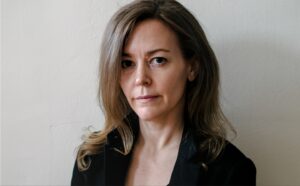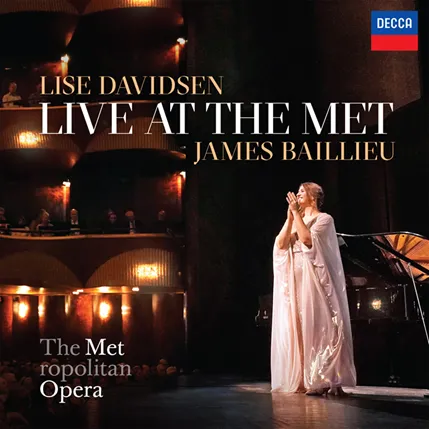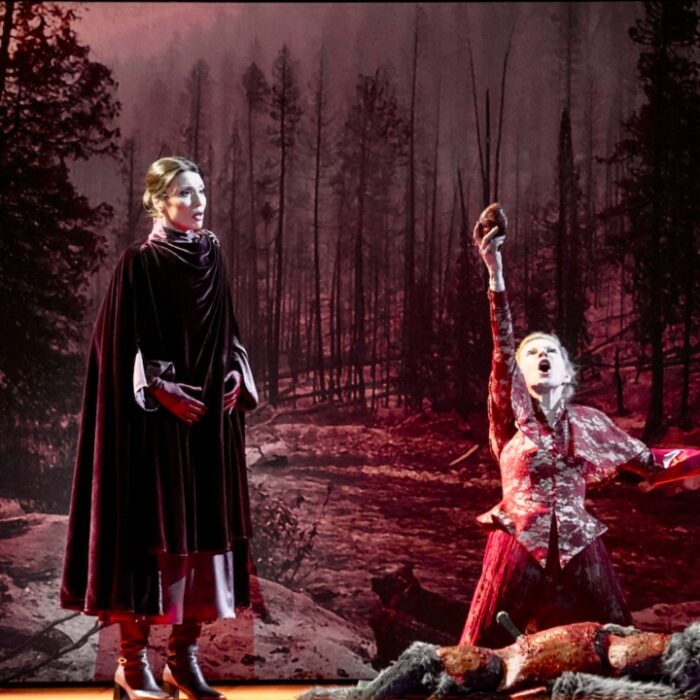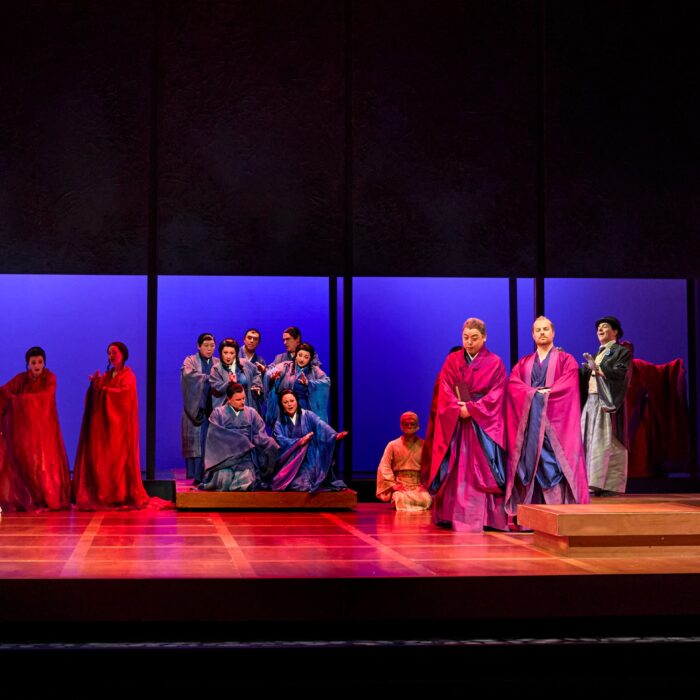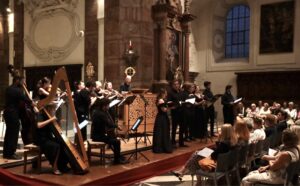
Innsbruck Festival of Early Music 2024 Review: Musica Hispanica
An Immersive Liturgical Experience of Two Musical Masters from 18th Century Spain
By Jennifer Pyron(Photo: ©Mona_Wibmer)
Innsbruck Festival of Early Music’s “Musica Hispanica” was an enriching evening of extraordinary compositions that resonated well with Innsbruck’s Jesuit Church (est. 1562). The church is considered one of Innsbruck’s earliest examples of Baroque architecture. Though it collapsed in 1626, shortly after its construction (1619-1622), “the misfortune turned out to be a blessing, because the church was now planned to be even larger and more beautiful than before.” So it was that the religious space began its transformation into what is, today, an ideal venue for a festival of early music. The artists featured for this performance were members from the Switzerland-based ensemble Los Elementos, including Jaia Nurit Niborski and Gunta Smirnova, soprano; Alberto Palacios Guardia, tenor; Mauro Borgioni and Santiago Garzón Arredondo, baritone; Claudio Rado and Jaume Guri Batlle, violin; Elena Abbati, viola; Giulio Padoin, cello; Giulio Tanasini, double bass; Olga Marulanda and Linda Alijaj, oboe; Chiara Granata, harp; Deniel Perer, organ; and Alberto Miguélez Rouco, countertenor and musical director. The group was founded in 2018 for the purpose of performing José de Nebra’s zarzuela “Vendado es Amor, no es ciego” for the first time with historical instruments. All of this began in Basel, where the founding members met while at the Schola Cantorum Basiliensis.
According to the “Musica Hispanica” program notes, this particular arrangement of works allows one to immerse themselves in the sounds of a fictitious liturgical service occurring around 1750 in the Royal Chapel of Madrid, with music by Francesco Corselli (1705-1778) and José de Nebra (1702-1768), who both worked there at the same time in the roles of director of music and vice-chapel master. The combination of such works made “Musica Hispanica” an evening of internal reflection and auditory bliss.
José de Nebra (1702-1768)
The opening piece, “Praeludium: Sinfonia,” from “Sinfonia en sol menor (G minor) for two oboes, strings, and basso continuo” (1740-50; Manuscrito de tecla de José de Nebra), was a delightful collaboration between the ensemble’s musical sound and the physical space. The reverberation of instruments and Alberto Miguélez Rouco’s voice in the church hall immediately melded into a blanket of blissful introspection. There was a sense of strong unity among the ensemble members that brought ease to the listener’s ears and mind. For reviewing purposes, I paid razor-sharp attention to every movement and word. However, this program was meant to be felt more than scrutinized by one’s mind. The entire purpose of this ensemble stems from this. To dedicate oneself to uncovering the works by José de Nebra is to become wrapped in the full body of sound as music becomes life itself. This is exactly what the evening became: a complete body of sound.
Ruoco’s countertenor was gentle and empathic. According to his bio, “was born in La Coruña (Spain) in 1994, where he studied singing with tenor Pablo Carballido del Camino and piano with Cristina López. In 2012 he began his singing studies at the Musik Akademie Basel (Schola Cantorum Basiliensis), where he studied with the mezzo-soprano Rosa Domínguez, finishing his Master Degrees in 2017 and 2019. He also studied harpsichord and basso continuo with Francesco Corti, Giorgio Paronuzzi, and Jesper Christensen.”
“Misa a 6: Servite Domino in laetitia” (Madrid, 1754; source: E-Mpa Leg 1.546, Cat. 870) was a beautiful extension of de Nebra. Both the Kyrie and Gloria rose to the church’s rafters, celebrating life itself. “Gradual: Sinfonia,” from “Sinfonia en Do mayor (D major), for two oboes, strings and basso continuo” (1740-50; source: E-Zac, Manuscrito de tecla de José de Nebra) followed this and rounded out the featured works by de Nebra that had opened the evening. The Credo was spectacular!
Francesco Corselli (1705-1778)
“Offertorium: Rompa, Señor, mi acento” from “Cantada al Santisimo for alto, two violins and basso continuo” (ca. 1740-50; source: E-Mpa Leg 1.483, Cat. 396) included the recitative “Rompa señor, mi acento,” aria “Llegar quiero a ese manjar,” recitative “Confuso corazón, teme, y se alienta,” and aria “De alterados elementos.” The ensemble’s voices sounded superb as they dove headfirst into the rise and fall of Corselli’s works. What I enjoyed most is that not one voice stood out from the other. This was ultimately about honoring the compositions of Corselli and the spiritual connection each movement had with the listener and musician. This part of the program felt like a meditation. I watched as audience members relaxed a bit more into their seats.
José de Nebra (1702-1768)
The next section of the program featured de Nebra’s “Sanctus,” and “Elevation: Despacio” from “Sinfonia en sol menor (G minor), for two oboes, strings and basso continuo” (1740-50, source: E-Zac, Manuscrito de tecla de José de Nebra). This was another highlight of the evening. The Agnus Dei was magnanimous in its ability to encompass mysteries and complexities alike.
Francesco Corselli (1705-1778)
Corselli’s “Communion: Hueco laurel frondoso” from “Cantada al Santisimo for soprano, strings and basso continuo” (ca. 1740-50; source: E-Mpa Leg 1.485, Cat. 435), included the recitative “Hueco laurel frondoso,” aria “Planeta superior,” recitative “Ya no hay temer del mundo,” and aria “Laurel que amparas.” This was another fantastic moment of historical restoration and binding of musical elements with liturgical moods. While listening to this, I referred back to the program notes written by Bernhard Achhorner: “The fact that de Nebra and Corselli worked together at the Royal Chapel of Madrid, which began when a fire in the Spanish royal palace destroyed all of the chapel’s church music, is a testimony to the close links between the European music scene in the 18th century. Their partnership was characterized by mutual respect, exchange, and the pursuit of excellence, with questions about their own origins and future always at the core of their musical work. Although they came from different parts of Europe and lived at a time when a ‘united Europe’ as we know it today did not yet exist, they were open to changes in their compositional work through musical influences from abroad. Together with the enthusiasm of the Los Elementos ensemble under the direction of Alberto Miguélez Rouco to rediscover and perform forgotten music, the central questions ‘Where do we come from? Where are we going?’ of the Festwochen 2024 invite us to remain mindful of our own origins and traditions, despite the always welcome look beyond the horizon. The culture of music should never be seen as a rigid construct, but rather as a dynamic source of inspiration for our journey into the future.”
To close the evening, “Los Elementos” performed Corselli’s “Hymn: Ave maris stella a 4” (1761; source: E-Mpa Leg 1.462, Cat. 247), including movements “Ave Maris stella,” “Monstra te,” “Virgo singularis,” “Vitam presta,” and “Sit laus Deo.” Members of the audience relished in the saturated sounds of musical nuance and emotional communication. “Musica Hispanica” left the impression of historical performance not as an academic study, but more as an exploration of where music can take one and how the universal language of music inspires more than just the history of music itself.
